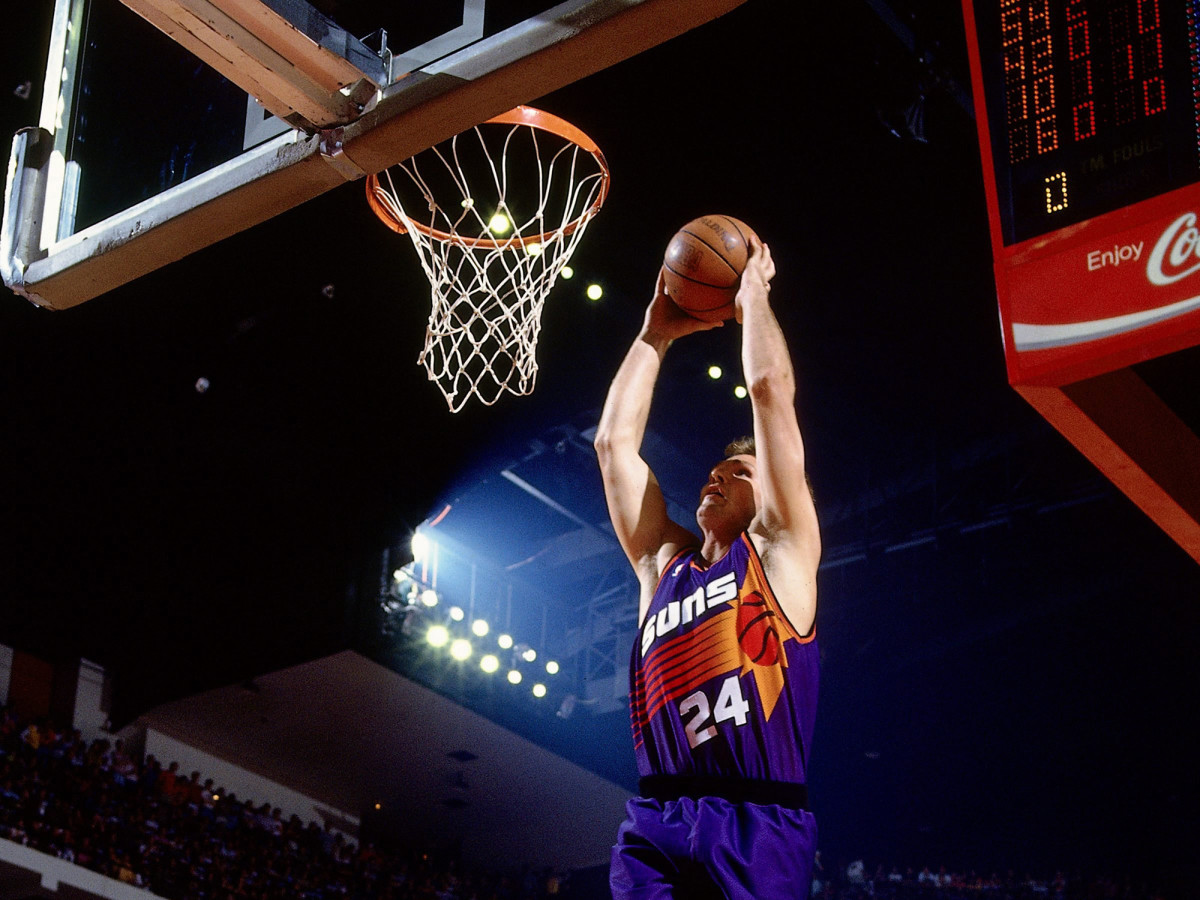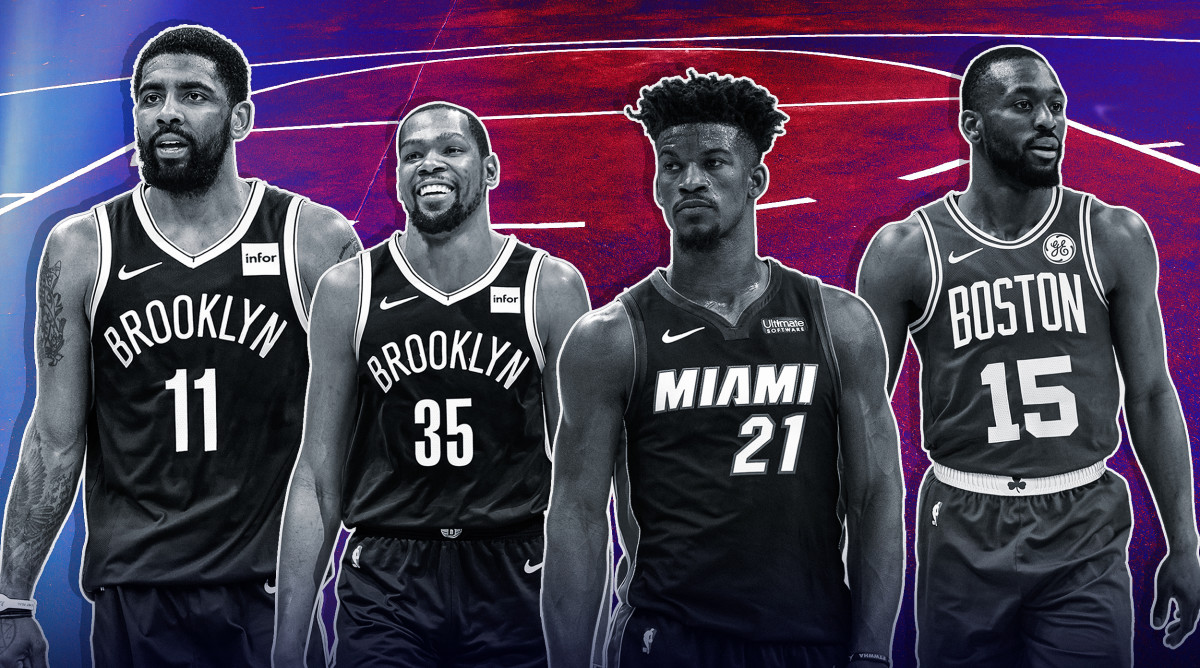The First NBA Free Agent to Sign Never Expected This Kind of Movement

Welcome to the Weekend Read. Below you'll find our favorite stories of the week, a tale about the first-ever NBA free agent to sign and a snapshot from perhaps the greatest tennis match of all time. Enjoy.
Last Sunday, four-time All-Star and 20,000-point scorer Tom Chambers was at his cabin above Park City, Utah, as NBA free agency was getting underway. Internet access there is spotty at best, so Chambers listened to SiriusXM’s NBA station as the countless transactions rolled in. “I’d never seen anything go that quickly,” he recently told The Crossover.
All of the NBA’s current wheeling and dealing can be traced back to the 6’10’’ power forward. In July of 1988, Chambers became the first unrestricted free agent in NBA history when he went from the Seattle Supersonics to the Phoenix Suns. “I’ve never really thought about it as an honor,” he said. “I just happened to sign the fastest.”
Thirty-one years ago, when Chambers joined the Suns after five seasons with the Sonics and two seasons with the San Diego Clippers, he didn’t hear any elaborate pitches. No famous Phoenix public figures tried to persuade him on moving to the desert. The franchise didn’t sell him on being a “Sun for life” or raise a banner into the rafters as a vision of the future. Phoenix merely reached out as soon as it legally could have—12:01 a.m. on the first day of free agency—and met with Chambers the next day.
It would have been impossible to predict that opening Pandora’s box decades later might lead to a two-time NBA Finals MVP leaving his team just weeks after winning a championship. Or that another two-time NBA Finals MVP would move across the country to join a team that just three years ago won 21 games. “It’s a little crazy,” Chambers said, referring to how free agency has changed. “But it’s a friggin' huge story.”
Chambers wasn’t necessarily looking to leave the Supersonics in the summer of 1988. He had just finished his fifth season with the franchise and had scored more than 20 points per game for the third time in a four-year span. But Seattle had won just 44 games and lost in the first round of the postseason. More importantly, the Sonics featured a crowded frontcourt.
Not getting this newsletter in your inbox? Subscribe today
He wasn’t sure how the positional battle would shake out. Chambers heard a number of rumors that he could be traded. “But I wasn’t worried about going someplace,” he said. He was confident that he could produce no matter what team he went too.
In April 1988, after more than a year of stalled negotiations and legal debates, the NBA and the players union agreed on a new Collective Bargaining Agreement. Previously, an NBA team could retain a player who received an offer from a second team by merely matching the contract. Teams had the right of “First Refusal.” Player movement was limited and there was a concern among owners that if players could control their own situations they would only go to cities like Los Angeles, Boston, New York and Chicago.
Under the new CBA, however, players who had been in the league at least seven seasons and were going into their third contract could immediately experience unrestricted free agency.
Following the ‘88 season, Seattle had extended a qualifying offer to Chambers, but Larry Fleisher, the founder and general counsel of the NBAPA, had hinted to him of a possible shakeup. “Don’t be in any rush, some good things are going to be happening,” Fleisher told the 6’10’’ forward.
Fleisher called the new CBA a “breakthrough agreement.” “For the first time in history, players will be free to choose the teams they want to play for after a certain period of time,” he said at the time. That offseason, more than 30 players qualified for unrestricted free agency including Moses Malone, Sidney Moncrief and the 30-year-old Chambers.

The 1987 All-Star Game MVP took only one meeting that summer. At the southern California home of his agent Howard Slusher, Chambers met with Suns owner Jerry Colangelo, head coach Cotton Fitzsimmons and assistant coach Paul Westphal. He was presented an offer on the spot.
“Let me think about it,” the forward recalled responding.
“Well, you have 15 minutes,” Colangelo replied. “You’re our number one, but we’re gonna get somebody.”
Other teams were waiting to meet with Chambers, but the four-time All-Star insists that Colangelo wasn’t going to leave the house without having a deal done. The sides agreed to a five-year, $9 million contract. Chambers flew directly to Phoenix for a press conference and in doing so, made NBA history.
Free agency still works at a fast pace, albeit news now trickles out immediately via social media. Last Sunday, between 6:00 and 6:01 p.m. ET, ESPN’s Adrian Wojnarowski fired off six tweets regarding players who had agreed to new contracts. And as June turned to July, almost all of the league’s top free agents had already found new teams. Chambers, who is now a studio analyst during Suns broadcasts, is amazed at how the process has changed.
On the topic of superteams and player movement, he says: “There was a lot more loyalty back then. Now it just seems they’re gonna go chasing a ring or a better team and having satisfaction that they built it... All that choosing to go hang with each other and play with each other seems to me to take away the competitive juices.”
Not getting this newsletter in your inbox? Subscribe today
On player salaries, he says: “It’s just crazy that guys are opting out of $25 million contracts to go get max-money, and with guys of Kawhi [Leonard] and [Kevin] Durant’s level, max-money is like $40 million a season. It’s just ludicrous.”
Chambers was initially surprised that Durant opted out of his contract with Golden State. And on Sunday, as he heard the avalanche of transactions over the radio, he was “shocked” that Kyrie Irving was headed to the Brooklyn Nets and that Durant was going to follow.
At his cabin, Chambers only goes online a few times a day. He has to go to out to the water tank if he hopes to access the internet. Most NBA offseasons, he says, are quiet enough where it’s not hard to keep track of the daily transactions.
But today, more than maybe ever before, the movement he kicked off in 1988 has become a modern-day craze. “It’s now,” Chambers said, “like nothing we’ve ever seen before.”

Recommended Reading
• Did you hear NBA free agency started? Here are the winners and losers of it, so far. (By Rohan Nadkarni)
• The post-Warriors era has arrived in the Western Conference—and it's going to be extremely fun. (By Andrew Sharp)
• As he nears 35, Max Scherzer is throwing like never before. Let's crack open the greatness of a generational talent. (By Tom Verducci)
• In 2017 an ACL injury shelved Julian Edelman just as his career was set to take off. Nearly two years later, with his recovery behind him, the Patriots’ WR is back on top and still wanting more. (By Ben Baskin)
• With the Rays’ ridiculous split-season Montreal plan, it’s clear MLB is just trying to shake down a city, any city, for a ballpark. (By Joe Sheehan)

Vault Photo of the Week: Wimbledon at Its Best
Let's roll it back 11 years to July 6, 2008, the day of an unforgettable tennis match between all-time greats. You'll see Rafael Nadal above, writhing on the Wimbledon grass in celebration of his five-set, (nearly) five-hour victory over Roger Federer in the 2008 finals match. Jon Wertheim chronicled the match for SI's cover story that week, ending his opening paragraph bluntly: "Let's be unequivocal: This was the greatest match ever played."
SI's Bob Martin captured the photograph above.
Best of the Rest
Editor's note: Below are some of our favorite stories of the week not published by SI. This week's list is curated by Ben Pickman.
• WNBA star Maya Moore stepped away from basketball this year, healthy and still in her prime. Kurt Streeter of the New York Times writes about how in Moore’s time away from the game, she’s trying to help free a man from prison she believes was wrongly convicted.
• A man who claimed he was a substitute high school during the Sante Fe, Texas, high school shooting in 2018 told news outlets a story of survival. But as Alex Samuels of the Texas Tribune discovers,the school district says he never worked there.
• For the Players’ Tribune, Sue Bird writes about her reaction to President Donald Trump’s recent criticism of her girlfriend Megan Rapinoe, the origin of “Megan Goggles," what she thinks of the USWNT star’s pink hair and so much more.
• Rustin Dodd of The Athletic tells the fascinatingly hilarious story of how a late-night British MLB show came to form a cult obsession among its viewers.
• Last month, longtime NBA scout Pete Philo was inducted into the Upstate New York Basketball Hall of Fame. But Deadspin’s Dave McKennatells the story of how Philo had a successful NBA career as a scout after being convicted of raping a teenager.
Editor's note: What kind of stories and content would you like to see in the Weekend Read? Let's chat at SIWeekendRead@gmail.com.
